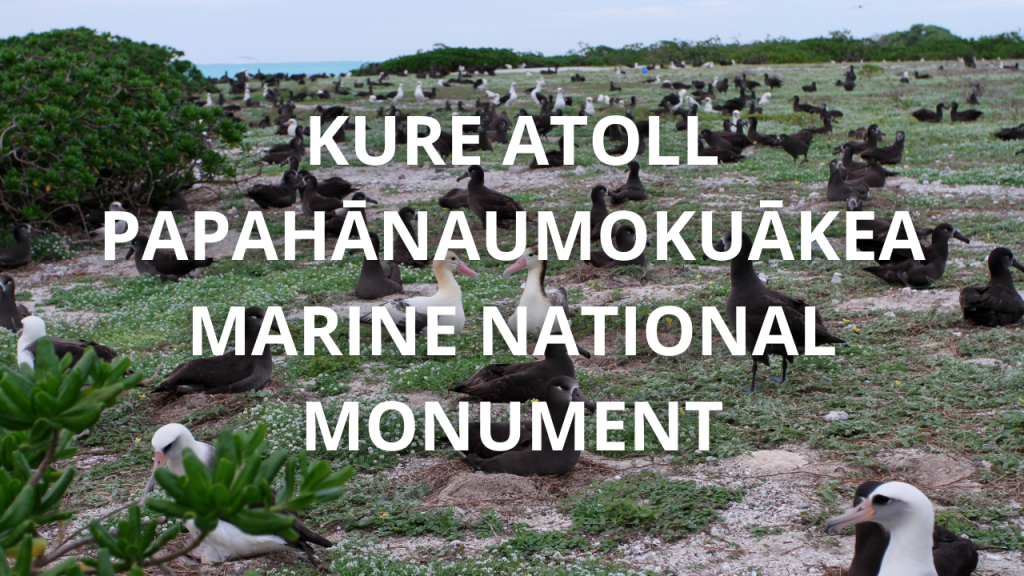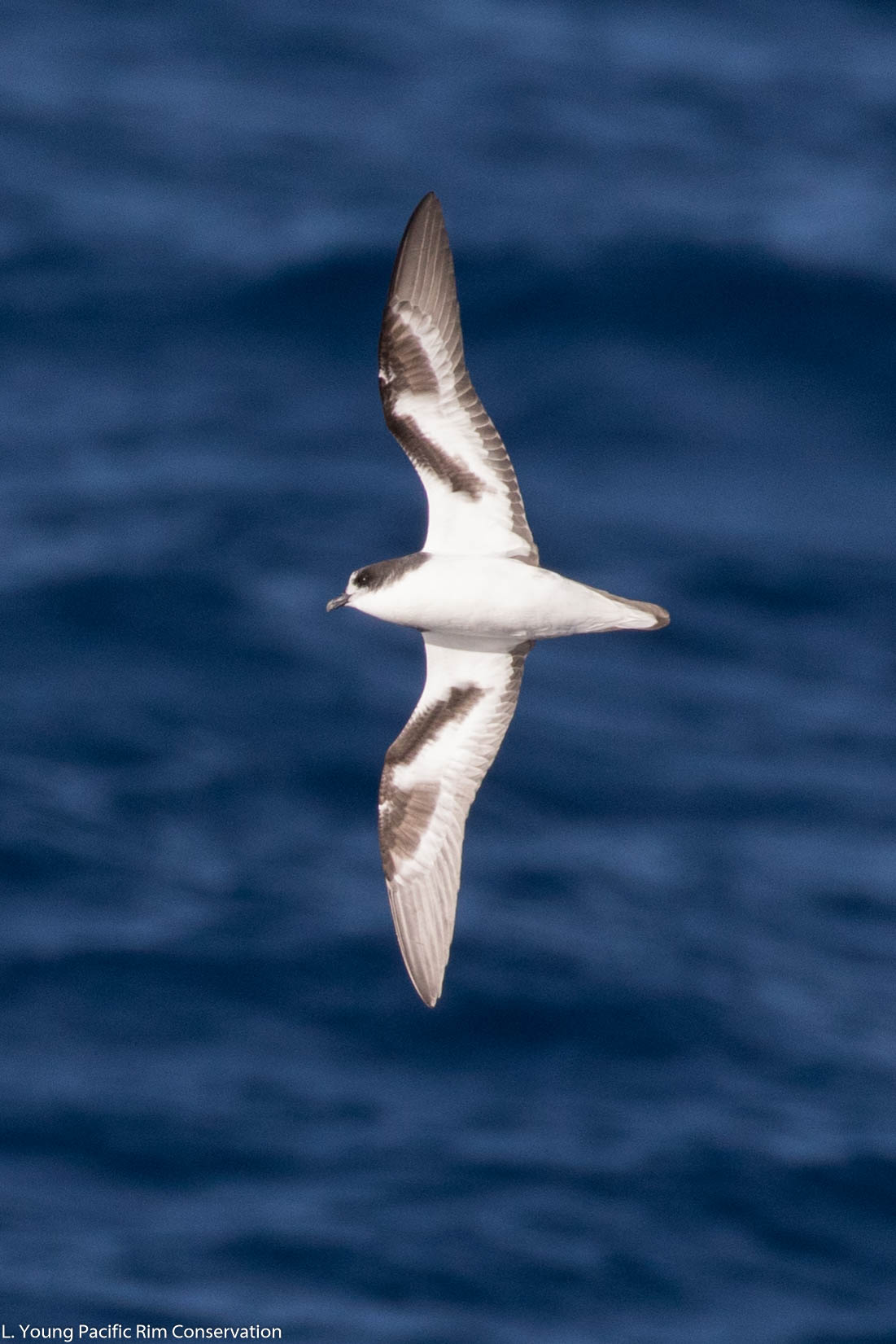Bonin Petrel

Names
- Common: Bonin Petrel
- Scientific: Pterodroma hypoleuca
Song
Conservation Status
- State recognized as Indigenous
- North American Waterbird Conservation Plan – Moderate concern
- Regional Seabird Conservation Plan – USFWS 2005
Species Information
The Bonin petrel is a small, nocturnal gadfly petrel (Family: Procellariidae) which breeds further north than any of its Pacific relatives. Like many pelagic seabirds, Bonin petrels mostly have dark upper parts and light underparts and the sexes are similar in appearance. Flight is fast, and compared to other petrels, the species is very maneuverable. Bonin petrels generally forage far offshore, and feed by seizing prey while sitting on the water or while hovering. Usually forages alone, but may join mixed species flocks. Unlike most of the same genus, Bonin petrels feed mostly on fish, primarily lantern fishes (Myctophidae) and hatchetfishes (Sternoptychidae), although squid (Ommastrephidae) also are important. Bonin petrels are winter breeders, and interestingly, the only other gadfly petrel that breeds in Hawai‘i (i.e., ‘ua‘u or Hawaiian petrel [P. phaeopygia]) nests in the summer. Like most seabirds, Bonin petrels breed in their natal colonies, form long-term pair bonds, have high site fidelity, lay only one egg per season, and both parents participate in all aspects of raising young. Bonin petrels nest in burrows which they excavate in sandy soils. In Hawai‘i, eggs are laid in mid January and chicks fledge by June. Competes with larger ‘ua‘u kani (or wedgetailed shearwater [Puffinus pacificus]) for burrows, and late fledging petrel chicks are sometimes killed by returning shearwaters. No information on age of first breeding. The oldest known Bonin petrel is 19 years old.
Distribution
Bonin petrels breed on the NWHI from French Frigate Shoals to Kure. Historically bred on MHI. Outside of Hawai‘i, breeding populations are restricted to Bonin and Volcano islands off of Japan. Outside the breeding season a few individuals remain in the waters surrounding the Hawaiian Islands, but most disperse widely mainly between Hawai‘i and Japan
Habitat
Terrestrial: Bonin petrels breed on predator free islands. Sandy soils are necessary for nest burrow excavation. Currently all breeding colonies in Hawai‘i occur in the Hawaiian Islands National Wildlife Refuge or the Midway Atoll National Wildlife Refuge. Marine: Pelagic.
Threats
- Non-native mammals. Historically, mammalian introductions to islands supporting nesting colonies resulted in declines or extirpations. On Lisianski and Laysan, rabbits (Oryctolagus cuniculus) denuded the island resulting in erosion which destabilized burrows. On Midway and Kure, rats (Rattus spp.) resulted in declines of breeding populations. Over a 40 year period, the Midway population declined from 250,000 to 5,000 pairs. Rabbits and rats have been eradicated from all NWHI.
- Collisions. Disorientation due to artificial lighting increases vulnerability to collisions with man-made structures.
- Invasive species. Non-native plants, specifically golden crown-beard (Vervesina encelioides) and sandbur (Cenchrus agrimonioides), degrades nesting habitat by providing poor soil stabilization. Introduced big-headed ants (Pheidole megacephala) at Kure may cause nestling mortality, but also facilitate the destruction of native vegetation by a nonnative scale insect.
Explore from Home
Additional Resources
For more information and references visit the DLNR State Wildlife Action Plan factsheets. DOFAWʻs species pages and State Wildlife Action Plan fact sheets are provided for general information and are not meant to be a citable, original source of data. If you are a student, researcher, or writer looking for a citable source, please explore the references below or find other original data sources, rather than citing these webpages. The references below were provided by the authors of the State Wildlife Action Plan fact sheets at the time of drafting:
- NatureServe. 2003. Downloadable animal data sets. NatureServe Central Databases. Available at: https://www.natureserve.org/getData/vertinvertdata.jsp (March 10, 2005).
- Seto NWH, O’Daniel D. 1999. Bonin petrel (Pterodroma hypoleuca). In The Birds of North America, No. 385 (Poole A, Gill F, editors). Philadelphia, (PA): The Academy of Natural Sciences; and Washington DC: The American Ornithologists’ Union.
- U.S. Fish and Wildlife Service. 2005. Regional seabird conservation plan, Pacific Region. U.S. Fish and Wildlife Service, Migratory Birds and Habitat Programs, Pacific Region. Portland, (OR): U.S. Fish and Wildlife Service.

 Kure Atoll
Kure Atoll